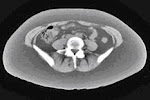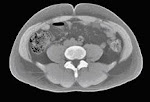To get the right perspective to this part, you should be reading this post immediately after my earlier one – “Fat loss: The stages involved”.
It is easy for the body to store fat but it is very difficult to remove it from the fat cells. When you eat fat, only 3% of it is used in digesting, breaking it down, transporting and storing. It has been shown in research that if you ate 50 grams cheese containing 12 grams fat, you would end up storing almost 11 grams of fat.
The first step in burning fat is its removal from the fat cells. This is perhaps the most difficult of the three steps involved in fat reduction. The technical term used for removing fat from the fat storage cells is lipolysis.
Exercises can provide the jump-start by activating a hormone called epinephrine(a catecholamine). Epinephrine binds to the fat cells to activate fat-breaking enzymes that allow the fat to move out from the fat cells and ooze into the blood. This process normally takes place two to three hours after a meal. Catecholamines (epinephrine and norepinephrine) and insulin are the major plasma hormones that regulate lipolysis in humans.
The fats are released into the blood in the form of Free Fatty Acids (FFAs). At this stage, another hormone, Glucagon, not only stimulates the release of FFAs into the blood stream but also inhibits release of glucose into the blood. (This is important since fat is the least preferred sourced of energy; fat is burnt only when there are no other energy sources available).
This is the underlying reason why fat-burning exercises should be done at least two to three hours after a meal. Also fat-burning exercises need to be of longer duration (60 minutes is ideal) since it takes about 15 minutes for the body to move the fat out of the storage area and transport it into the fat-burning sites in the muscles. This process works best during moderate to low intensity exercises when adrenaline levels are increased.
Subscribe to:
Post Comments (Atom)


No comments:
Post a Comment